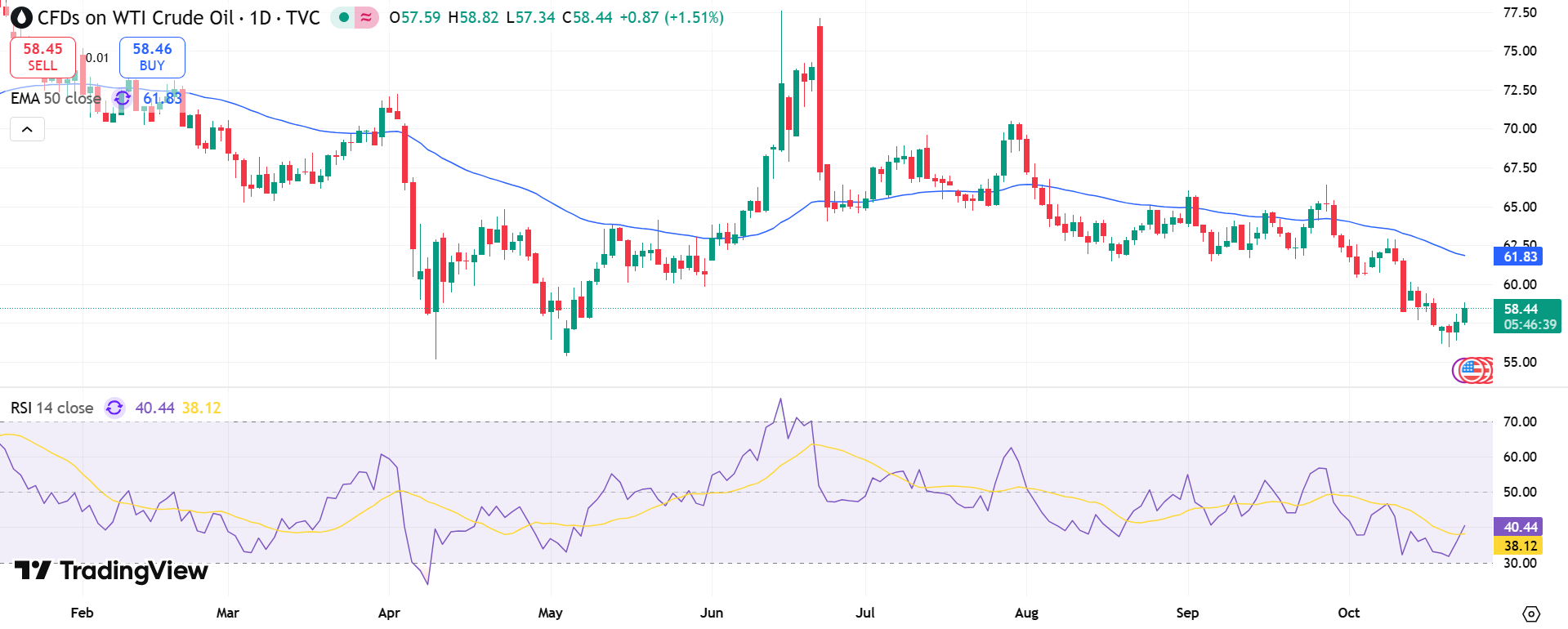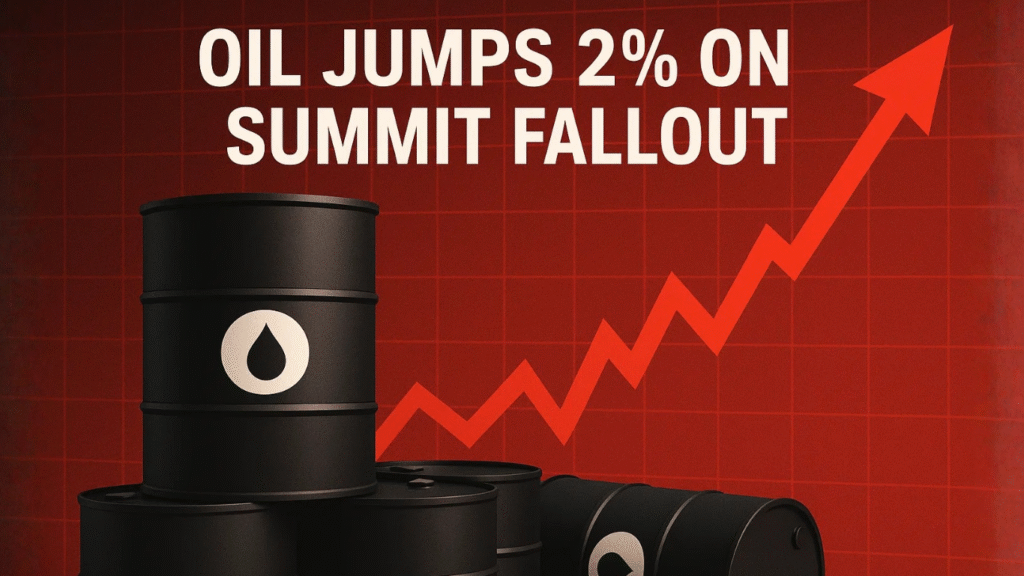Oil prices climbed for a second straight session Wednesday after the planned U.S.–Russia summit on the Ukraine war was abruptly shelved, dampening hopes for peace and heightening concerns over prolonged supply risks.
At 08:10 ET (12:10 GMT), Brent crude for December rose 2% to $62.54 a barrel, while West Texas Intermediate (WTI) gained 2.1% to $58.44. Both benchmarks had earlier touched five-month lows amid renewed U.S.–China trade friction but rebounded as geopolitical tensions flared once again.
President Donald Trump’s conciliatory tone on trade with China offered some relief to markets, yet his decision to cancel a high-stakes meeting with Vladimir Putin erased optimism of a potential diplomatic breakthrough.
“The cancellation of the Trump-Putin summit erodes hopes for a ceasefire, keeping oil markets on edge,” analysts at ING wrote. “This, combined with steady profit-taking and inventory draws, has helped firm prices.”
U.S.–Russia Tensions Pressure Outlook
The White House confirmed late Tuesday that Trump had indefinitely postponed his planned meeting with Putin, saying “it would be a waste of time” given Moscow’s refusal to discuss a ceasefire. Russia continues to insist that Ukraine surrender key territories as part of any truce — a demand Kyiv has flatly rejected.
The breakdown in diplomacy renews fears of prolonged disruptions in global energy flows, especially as Ukraine intensifies strikes on Russian oil and gas infrastructure.
Key takeaways from the market reaction include:
- Safe-haven demand for crude rose after talks collapsed.
- Energy supply risks remain elevated as hostilities persist.
- Investor sentiment improved slightly on signs of U.S.–China trade thaw.
Traders also noted that the sell-off earlier this week was likely overdone, with prices now stabilizing near technical support levels.
U.S. to Refill Strategic Reserves
Data from the American Petroleum Institute (API) showed a 2.98 million-barrel drop in U.S. crude inventories for the week ending October 18, reversing a 3.5 million-barrel build the week before. The upcoming Energy Information Administration (EIA) report is expected to confirm a similar decline, signaling stronger demand conditions.

Adding to the bullish sentiment, the U.S. Department of Energy announced plans to purchase 1 million barrels of oil for the Strategic Petroleum Reserve (SPR), capitalizing on lower prices to replenish national stockpiles.
The SPR currently holds 408 million barrels, up from 347 million in 2023, though still far below the 656 million barrels recorded in 2020.
Market analysts say the move could help rebalance short-term supply while providing a modest boost to domestic prices. With geopolitical risks and inventory draws aligning, crude markets may find firmer footing heading into November.


